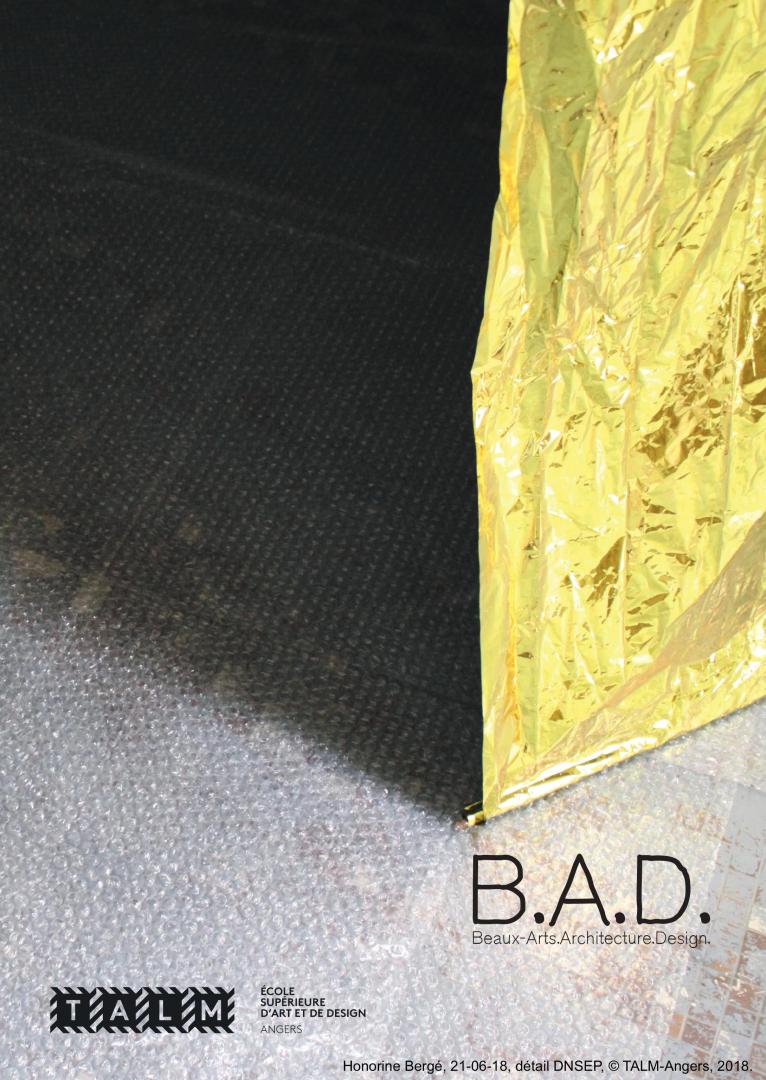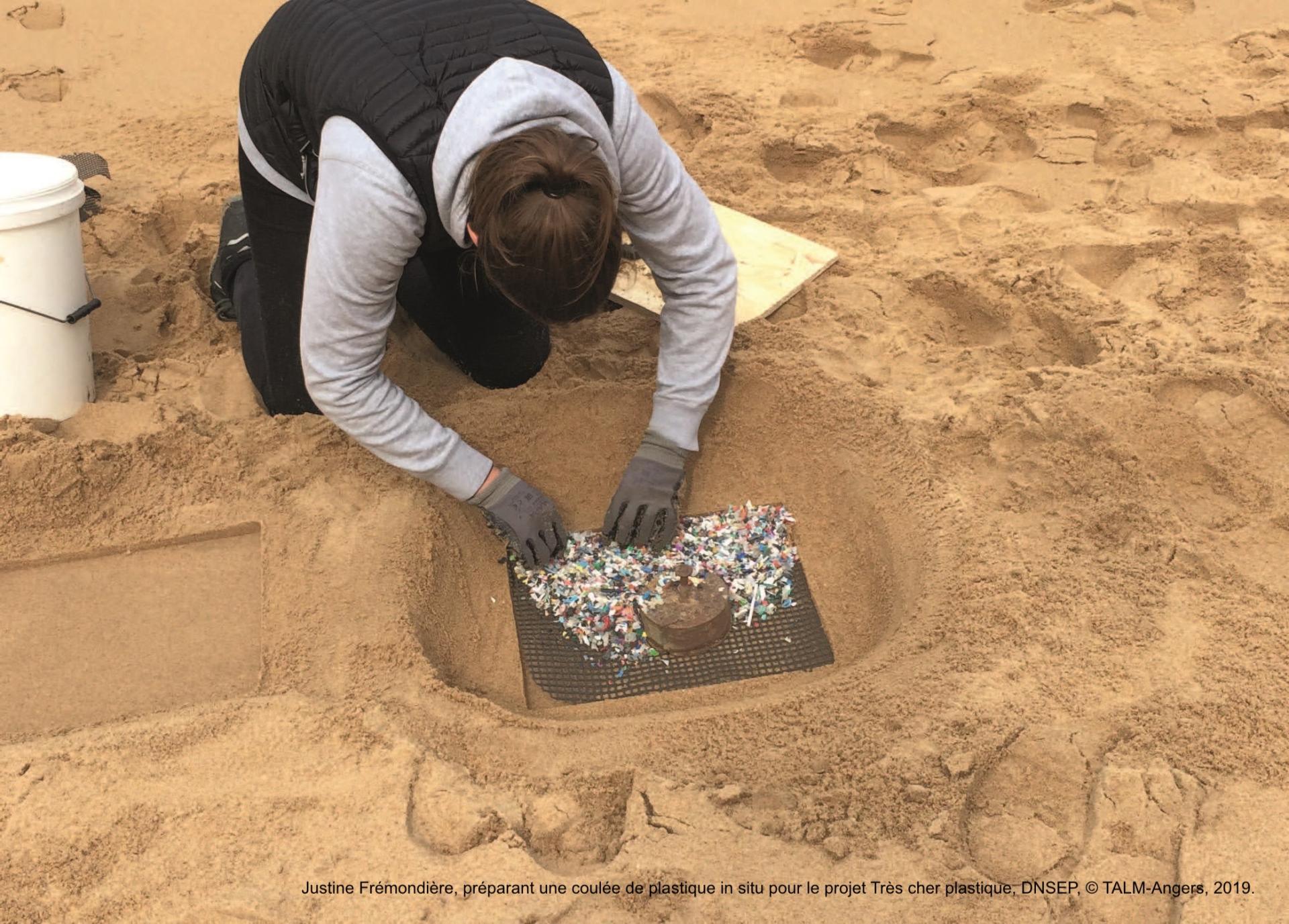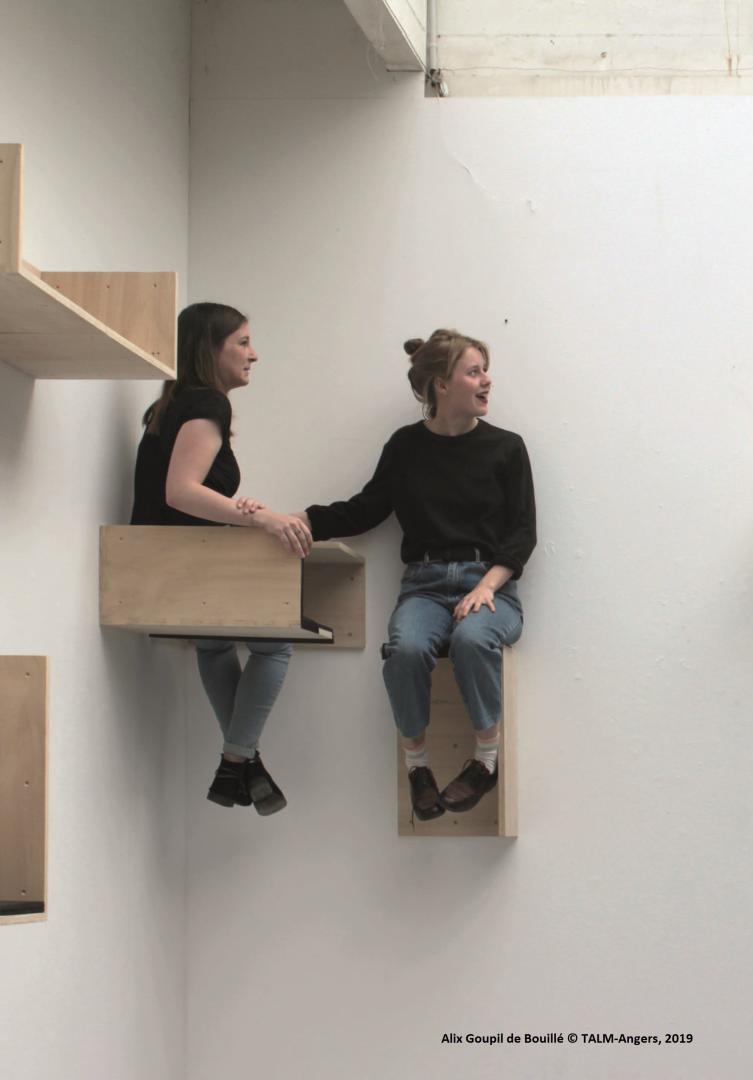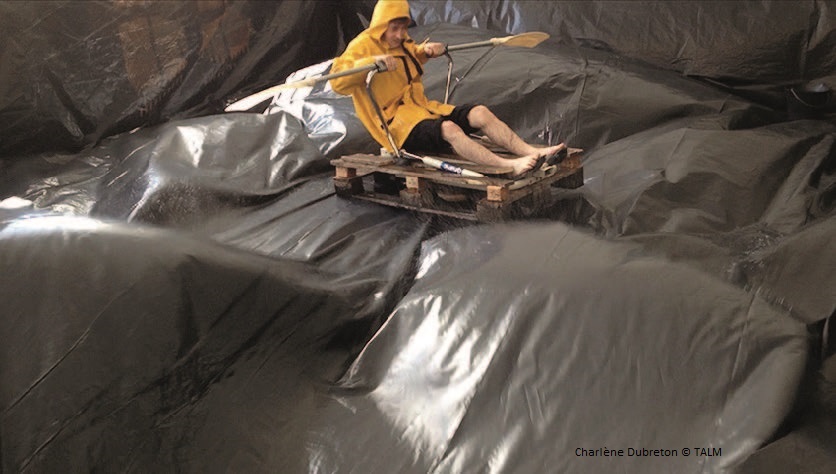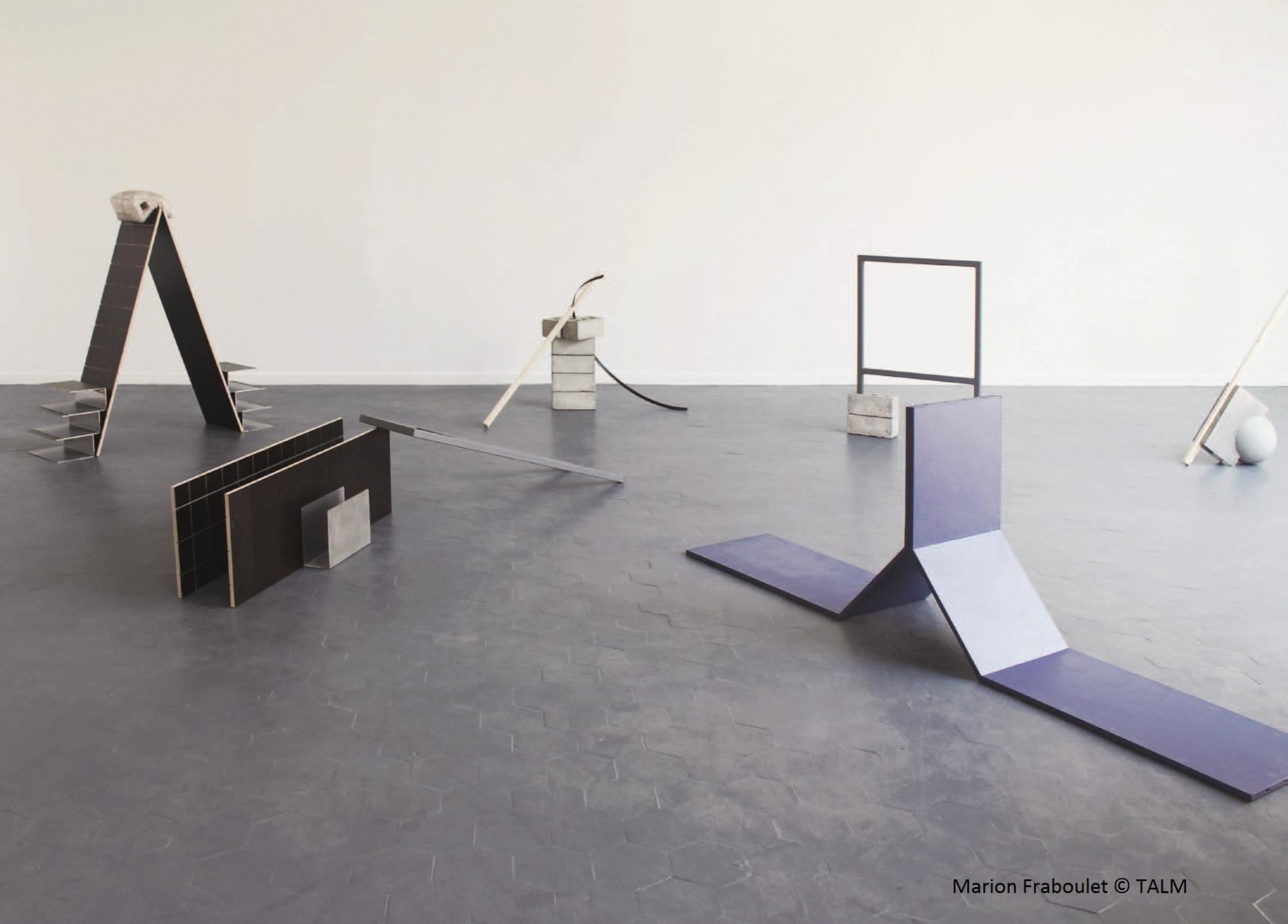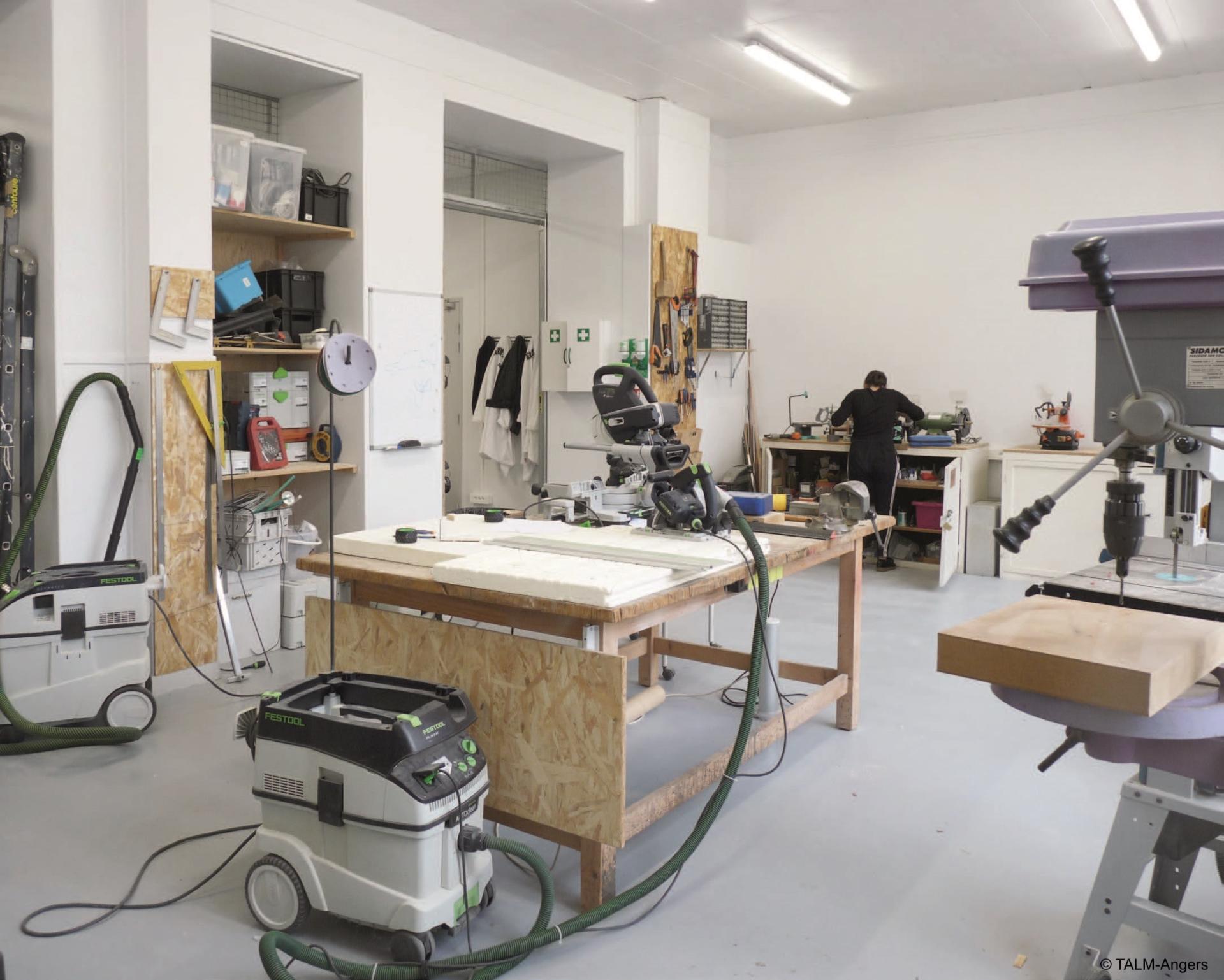Master degree B.A.D. Design
Basic information
Project Title
Full project title
Category
Project Description
"Good design goes to heaven; bad design goes everywhere." Mieke Gerritzen.
B.A.D., an acronym for beaux-arts (fine arts)/architecture/design, is a graduate training programme in Design offered since 2019 at the École supérieure d’art et de design TALM-Angers. The training relies on an interdisciplinary pedagogical model in which three disciplines connect and converse in equal measure. The Design option proposes a multifaceted approach – in accordance with the generalist vocation of design.
Project Region
EU Programme or fund
Description of the project
Summary
B.A.D., an acronym for beaux-arts (fine arts) / architecture / design, insists in a pragmatic way on a relationship – dialectical and complementary – between these three instances and practices which structure the teaching of design at the École supérieure d’art et de design TALM-Angers, in project workshops where each of these areas is equally represented. The Design option does deliberately not seize a medium or a notion to make it a speciality, but proposes a non-specialist and multifaceted approach – in accordance with the generalist vocation of design. Because design does not unilaterally concern object, space, social, ecological, digital, culinary, clothing, sound or even service, it is charged with calling on, expressing and organising all data involved in a project, which the B.A.D programme intends to build and dialogue with contemporary art – instead of the so-called “industrial” aesthetic. Transversality is not only an inherent part of design, but it is – in order to train a designer able to tackle the complexity – the very condition of its renewal and its extension.
Key objectives for sustainability
The question of sustainability is one of the fundamental issues raised in the programme. What would a good design be? The period when Raymond Loewy printed this short phrase Never Leave Well Enough Alone is over. Since then, geopolitical and political upheaval, climate, technical and aesthetic changes have reshuffled the cards of production, established as the activity of transforming raw materials into artefacts, bringing added value to the realisation of goods and services. This is why the master degree B.A.D. offers going beyond the common qualifiers attached to the term “design” by accompanying the students in the definition, constantly updated, of their own practices, so that they continue to invent themselves, soaked in modern emergencies (global warming, finite nature of resources, heterogeneous methods of production and design, social divisions, etc.). The B.A.D. programme is intended to train designers capable of calmly tackling climatic challenges, challenges surrounding the degrowth and the deconsumerism that modern production is struggling to grasp. If the economy of motion and means, just like recycling and reusing policies, are a common sense reflex, they are nowhere near enough. For the future designer it’s about being trained to intervene in the formatting of the material world by exceeding Manichean divides: high/low; fast/slow; pure/applied; sacred/secular; technician/amateur; theory/practice; raw/smooth; etc. This in order to participate in a renewed economy as much as in an ecology of future forms.
Key objectives for aesthetics and quality
By proposing a critical approach, the B.A.D. master’s degree programme sits within a history of design, architecture and art:
- in the tradition of the radical Italian design from the 1970s or that of the English Dunne & Raby, a design which developed or develops projects and scenarios of alternative and utopian lives, more than it produces objects or services;
- in the tradition of post-modern architecture, that of Learning from Las Vegas by Robert Venturi and Denise Scott Brown or even that of Delirious New York: A Retroactive Manifesto for Manhattan by Rem Koolhaas;
- in the tradition of post-Dada movements, situationists, the Fluxus movement.
Each of them poses the question of a new relationship between the disciplines of design and society: what social, cultural, political, aesthetic relationship to technique should be invented for society in the future? What will be the position and the role of the designers? What materials must the latter now use? With what tools? And to respond to which social aspirations and requirements?
If this pedagogical approach is fed by the practices of contemporary art, less as a result than as a motion, less as acknowledgement than as registration, this is due to questions of form: design has always had the modus operandi of pre-empting existing forms, on the condition that original forms are produced, it’s a work that seems like the creative process of producing art. For all that, beyond an essential proximity, the projects explicitly claim to be design, their research always relies on products, services or spaces considered to be a category integrating into daily life. So these regions and their environments – whether it’s furniture, advanced technology, an innovative service or architecture – are no longer considered as being a simple artefact but as an intermediary that enables to consider in a sensitive way the context in which the form is registered: the human environment, the challenge of social interactions.
Key objectives for inclusion
The subject used by the student enrolled in the B.A.D. programme is that of context (social, political, economic and environmental – the climate aspect being one of the parameters) or the production tool itself. It involves seeing the constructed area or the production tool as a reservoir of material and immaterial forms which can be both the subject and object of the project. The tools are those of movement, reuse and the assembly of forms and their expertise. The design and production are currently spread out in a diffuse way depending on the context; the designers therefore find themselves with the production tools for more and more heterogeneous forms. They must be just as capable of participating in the real and physical construction of the material environment as in its symbolic construction and, in that sense, in its social acceptance. It is therefore about developing, for the student, the ability to summon the right knowledge and expertise, at the right moment and in the right situations. To be capable of understanding and evoking the challenges and expressing them as well as possible, by considering them in all their joyous complexity.
Results in relation to category
Art, architecture and design are, simultaneously and alternately, envisaged as an object and subject of their own practice, meaning as a project matrix, following the example of the DNA double helix containing the information necessary for its self-replication and the software to do it. Design is not reduced to industrial creation, it exceeds functionalism through decentring of the specialised point of view, in favour of an art/architecture/design focal point. It is a renewed approach to the practice of design which is free, creative and critical in which the project rebuilds itself in all of its moments, from order to distribution, like so many creative levers. The contemporary designer breaks away from the role of demiurge committed in a social utopia that the Moderns had drawn for him/her. In favour of that of a reader or an actor who raises the question of establishing an ecology of forms the purpose of which would be to reconcile civilizational reconfiguration, technical organisation and symbolic projection.
The students participate in transversal projects with the Art option. As a contributor to his/her training, the student of master degree B.A.D. trains to develop a special place at the intersection of art, architecture and design, all while being equipped with a critical regard and informed on new (or not so new) means of production, on the economic and social transformations and on the questions raised by these changes. The acquisition of transferable skills cultivated from the three fields practised within the B.A.D. programme opens a wide range of job prospects for the new B.A.D. graduates in which they can navigate and position themselves. The interdisciplinary vocation of the programme earmarks it for students from different backgrounds: schools of art and design, architecture, interior design, set design, students from cultural engineering university programmes, students from engineering or business schools.
How Citizens benefit
The B.A.D. specialisation intends to train designers to address contemporary challenges, whether they’re social, environmental, political, etc. In this way the projects developed are numerous to be in line with civil society – in situ or remotely – in order to take into consideration its challenges and uses.
Into the programme, the B.A.D. workshop is a transversal collective project, led by a group of professors (designer, architect, artist, theorist). The professors propose to question together a problematic related to contemporary design issues. Every year, a chosen theme – obsolescence, transport, energy, common good, territory, design policy, etc. – is the subject of a collective project by integrating the contrasting creation models and a development scenario of a project, a service, a space, etc. This workshop enables the fourth-year student to ascertain a project methodology and collectively enriched research.
In 2020/2021, the work theme of the B.A.D. project workshop is Landscape experienced/Landscape perceived. In this context the territory studied is Cap Sizun, located in the French department of Finistère (Brittany). Despite a deferment of their planned study trip, due to the health crisis, the students and professors will go to Cap Sizun in June 2021 for a work session. Accommodated at Ateliers Jean Moulin in Plouhinec, they will have three days of intense confrontation with the region and its elements: how to confirm, disprove, verify, invert the projections and other speculations created remotely.
In preparation for this trip the students developed projects in connection with this region. For example, two students sought to understand the place through its inhabitants, by establishing a virtual relationship with them by way of a Facebook group for the inhabitants of Cap Sizun. The students received a hundred or so photos: “They were very happy to share their landscape experienced and we’re very eager to learn more about the landscape we perceive.”
Innovative character
The training is innovative in several ways.
- Because of the combined disciplines and the interdisciplinary nature of the pedagogical model.
- Through the research programmes developed at TALM which irrigate the B.A.D. specialisation.
- Regarding the position of the training within a graduate school of art: B.A.D., a simply showy acronym that would be easy to like? Fully accepting the undertones of B.A.D., the TALM-Angers Design master degree questions design ensuring that it is a critical and rebellious discipline, with a willingly protesting and maverick nature. But what are its demonstrations? The position of design within graduate schools of art is often that of a sub-discipline of art, considered as being impure, uninspiring, because it is subject to the market, in league with the industry, accountable to the evils of capitalism. A “dirty art” because it is submissive. Let it be so: design as bad art in Art. After all, Ettore Sottsass Jr. had himself conceded he had been “very mean” in his time. Designers know how to contend with the roles that are assigned to them, just as they know how to play with the constraints they are subjected to. It’s their strength.
- Innovation is also found in the strong diversity of the academic profiles of the students joining the B.A.D. training programme: school of art and design, school of architecture, school of interior design, school of set design, students from cultural engineering programmes wanting to supplement their training with an artistic dimension or even students from management or business schools.
- Finally, the innovative nature of the training can be found in the diversity of the possible job prospects for this interdisciplinary training. The acquisition of a culture that deeply links technical and artistic frameworks, as well as skills closely connected to programming, design and manufacturing, offering the B.A.D. graduates multiple career paths: employee, partner, freelancer, researcher, entrepreneur, etc.

